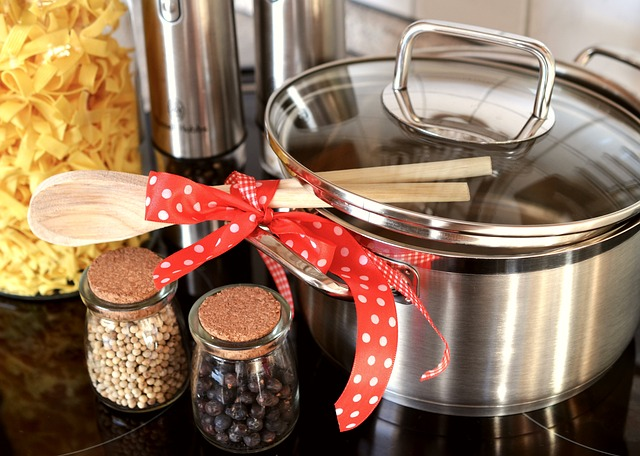This post contains affiliate links. If you use these links to buy something we may earn a commission. As an Amazon Influencer, I earn from qualifying purchases.
Welcome to the world of cooking in 2023! A lot has changed in recent years, and the way we approach home cooking is no exception. In this blog post, “Cooking Statistics 2023: Uncovering the Latest Trends in Home Cooking” we’ll dive into the latest trends and cooking statistics 2023, from the impact of the COVID-19 pandemic to generational differences, cooking methods, appliances, and much more. So, put on your apron and let’s get started! With the holidays coming soon, make sure to check out our Holiday Guide for Cooks.
Key Takeaways on Cooking Statistics
- COVID-19 has led to an increase in home cooking and healthier eating habits.
- Meal planning and preparation is becoming more popular, with different generations bringing their own unique approach.
- Cooking at home can save money while providing delicious meals for dietary needs & preferences – plus it’s a lifelong journey of learning & growth!
The Impact of COVID-19 on Home Cooking

The COVID-19 pandemic has significantly influenced home cooking habits, with more people cooking at home and making healthier choices. The lockdowns and restaurant closures have prompted many to rediscover the joys of home-cooked meals and experiment with new recipes and techniques.
In the following sections, we will delve into changes in cooking frequency, trends in meal planning and preparation, as well as the rise of healthier eating choices during the pandemic.
Shifts in Cooking Frequency

As the pandemic forced us to stay home, it’s no surprise that many turned to cooking as both a necessity and a creative outlet. Studies have shown that a significant number of people increased their cooking frequency during this time, with some even cooking daily or multiple times per week. A mere 8.4% of Americans spent over an hour preparing a weeknight meal, yet the data reveals mothers averaging 75 minutes in the kitchen, with fathers trailing at around 43 minutes. This highlights how different individuals and households adapted their cooking routines during the pandemic.
With more time spent at home, the opportunity to explore new recipes and techniques became a welcome distraction. Cooking shows and online resources saw an increase in viewership as people sought inspiration and guidance for their culinary endeavors. This newfound enthusiasm for home cooking not only provided a sense of accomplishment but also fostered healthier eating habits as families came together to enjoy home-cooked meals.
Meal Planning and Preparation Trends
As home cooking became more prevalent, the popularity of meal planning and preparation also increased. On average, Americans spend around 400 hours in the kitchen each year, and it’s no surprise that many Americans cook regularly. Interestingly, cooking statistics show that 80% of women compared to just 40% of men are likely to cook and take responsibility for planning and prepping meals in the family. This highlights the importance of meal planning in managing busy schedules and ensuring balanced diets for many Americans.
The adoption of meal planning allows individuals to:
- Conserve time and money
- Facilitate a healthier lifestyle
- Have better control over portion sizes, ingredients, and nutritional content
- Reduce food waste, as groceries are purchased with specific recipes in mind
In a time when health and well-being are of utmost importance, the rise in meal prepping has undoubtedly contributed to a more stable food supply, eating healthier, and fostering better eating habits as people learn to prepare meals efficiently.
Healthier Eating Choices
The pandemic has undeniably encouraged healthier eating choices, with more people opting for home-cooked meals over fast food and takeout options. In fact, over the past two years, there has been a growing trend towards home cooking and healthier eating. As people spent more time in their kitchens, they became more conscious of the ingredients they used, often opting for healthier and more sustainable options.
Cooking at home allows for greater control over portion sizes, ingredients, and cooking methods. This has led to a shift in eating habits, with many discovering the benefits of whole, unprocessed foods and fresh produce. As a result, there has been a significant increase in the number of people embracing healthier eating choices, leading to a lasting impact on overall health and well-being.
Generational Differences in Cooking Habits

Different generations have varying cooking habits, with distinct skills, techniques, and preferences. Factors such as cultural influences, food availability, and societal trends all play a role in shaping the way each generation approaches home cooking.
Next, we will examine the distinctive cooking skills and techniques across generations, how much time they spend to cook dinner, and their favorite meals and ingredients.
Cooking Skills and Techniques
Each generation brings its own set of cooking skills and techniques to the table, influenced by cultural and societal factors. For example, research suggests that younger generations like Gen Z and Millennials are more likely to use technology and online platforms like TikTok to learn new cooking techniques and discover recipes. In contrast, older generations may have acquired traditional cooking skills through hands-on experience and inherited family recipes.
The exchange of knowledge between generations is essential in keeping culinary traditions alive and fostering creativity in the kitchen. As younger generations embrace modern cooking techniques and experiment with global cuisines, they also benefit from the wisdom and experience of their elders. This fusion of traditional and contemporary skills and techniques enriches our culinary landscape and offers a diverse range of delicious dishes for all to enjoy.
Time Spent in the Kitchen
Time spent in the kitchen varies across generations, with older individuals typically spending more time cooking than younger ones. Gen Z and Millennials usually spend around 53-55 minutes preparing food, while the average modern adult spends only about an hour cooking and preparing food each day, which is almost half the time their parents spent in the kitchen.
This difference in time spent in the kitchen can be attributed to various factors, such as:
- the availability of convenience foods
- the use of technology in meal planning and preparation
- shifting societal norms around gender roles and family dynamics.
Regardless of the time spent in the kitchen, each generation brings its unique perspective and approach to home cooking, contributing to a rich and diverse culinary heritage.
Preferred Meals and Ingredients
Preferred meals and ingredients differ among generations, reflecting changing tastes and dietary trends. Here are some examples:
- Generation Z tends to gravitate towards natural, organic foods and menus that promote clean eating.
- Baby Boomers are more likely to purchase specialty ingredients for food preparation.
- Millennials, often dubbed the “foodie” generation, have a refined interest in their food, exploring new tastes and flavor combinations while also preferring simpler ingredients and flavors.
These generational preferences showcase the diversity of tastes and culinary interests that exist within our society. As each generation shares its preferred meals and ingredients, they contribute to a rich tapestry of flavors, techniques, and culinary wisdom that benefits all who enjoy home cooking.
Cooking Methods and Appliances

Cooking methods and appliances have evolved over time, with modern technology playing a significant role in today’s kitchens. From traditional cooking techniques passed down through generations to innovative appliances that transform the way we prepare our meals, the world of cooking is constantly changing.
Next, we will compare traditional and modern cooking methods, highlight the most popular kitchen appliances, and discuss recent advancements in cooking technology.
Traditional vs. Modern Cooking Methods
Traditional cooking methods, such as slow cooking, using natural ingredients, and preserving food through techniques like fermentation or drying, have been passed down through generations and are still used today. These methods often involve simple ingredients and techniques, with dishes often holding cultural or regional significance.
In contrast, modern cooking methods utilize advanced technology and scientific knowledge to make cooking easier and more efficient. Some common features of modern cooking methods include:
- High heat and fast processing
- Industrial chemistry
- Use of flavor extracts and coloring agents
- Specialized equipment for even heat distribution and precision cooking
These advancements have revolutionized the way we cook and have made it possible to create a wide range of delicious and complex dishes, including the ever-popular mashed potatoes.
While traditional and modern cooking methods each have their merits, they coexist in today’s kitchens, offering home cooks a diverse range of culinary options to suit their preferences and needs.
Most Popular Kitchen Appliances
In today’s kitchens, various appliances have become immensely popular, transforming the way people cook at home. Some of the most sought-after kitchen appliances in 2023 include:
- Instant Pot Duo 7-in-1 Electric Pressure Cooker
- Dash mini waffle maker
- Ninja Digital Air Fry Countertop Oven
- Crockpots
- Toaster ovens
- Ice cube trays
- Blenders
- Grills
- Air fryers
- Steam ovens
These appliances offer convenience, ease of use, and time-saving benefits that make home cooking more enjoyable, even when using frozen food.
The popularity of these kitchen appliances can be attributed to their ability to make cooking more efficient and enjoyable. They cater to various cooking methods, preferences, and dietary needs, making it easier for home cooks to experiment with new recipes and techniques. As technology continues to advance, we can expect even more innovative and user-friendly appliances to transform the way we cook and enjoy our meals.
Innovations in Cooking Technology
Innovations in cooking technology continue to shape the future of home cooking, making it more efficient and enjoyable. Smart appliances, automated meal planning, and sous vide cooking are just a few examples of cutting-edge technologies that are gaining popularity in modern kitchens.
These innovations have multiple benefits, such as reducing the time spent on meal preparation, ensuring perfectly cooked dishes, and even helping with dietary restrictions and preferences.
As cooking technology continues to evolve, home cooks can look forward to even more advanced tools and techniques that will make the process of preparing meals more efficient, enjoyable, and accessible to all.
The Economics of Home Cooking

Cooking at home can often be more cost-effective than dining out, and there are numerous strategies to save on groceries. In the following sections, we will:
- Compare the costs of dining out versus cooking at home
- Suggest some budget-friendly meal ideas
- Provide tips to save money on groceries while still enjoying tasty and healthy home-cooked meals.
Cost Comparison: Eating Out vs. Cooking at Home
Cooking at home is generally cheaper than eating out, especially when using affordable ingredients and planning meals in advance. On average, it costs about $4.31 per serving for a home-cooked meal, while eating out usually costs around $20.37 per meal. With the rising prices of restaurant meals, cooking at home becomes an even more attractive option for budget-conscious individuals and families.
By preparing meals at home, you can have greater control over the ingredients, portion sizes, and overall cost of each meal. Moreover, home cooking allows for healthier and more personalized meal options, catering to specific dietary needs and preferences. Thus, by opting for home-cooked meals, you can save money while still enjoying delicious and nutritious dishes.
Budget-Friendly Meal Ideas
Creating budget-friendly meals doesn’t mean you have to sacrifice taste or nutrition. Some affordable meal ideas include pasta dishes, stir-fries, and casseroles. These meals are easy to make, do not require expensive ingredients, and can still be packed with flavor and nutrients.
In addition to choosing budget-friendly recipes, you can also save money by shopping sales, buying in bulk, and utilizing pantry staples. By planning your meals around the ingredients you already have and taking advantage of discounts and sales, you can create satisfying and nutritious meals without breaking the bank.
Tips for Saving Money on Groceries
Saving money on groceries is possible with smart shopping strategies and careful planning. Some tips for saving money on groceries include:
- Shopping sales and discounts
- Buying in bulk when possible
- Using pantry staples to create versatile and cost-effective meals
- Planning meals around the ingredients you already have
- Storing food properly to prevent spoilage and food waste
By following these tips, you can maximize your grocery budget and enjoy a variety of delicious home-cooked meals. Not only will you save money, but you’ll also be able to provide your family with healthier and more personalized meal options.
Cooking for Dietary Needs and Preferences

Accommodating dietary needs and preferences in cooking demands both knowledge and creativity, and there are plenty of resources available for guidance. In the following sections, we will discuss ways to cook for allergies and intolerances, vegetarian and vegan diets, and special diets, all while ensuring the meals are still delectable and enjoyable for all.
Cooking for Allergies and Intolerances
Cooking for individuals with allergies and intolerances involves:
- Understanding the ingredients used in recipes
- Finding suitable substitutes to ensure safe and enjoyable meals
- Being aware of potential allergens and cross-contamination
- Reading labels carefully when shopping for groceries.
When cooking for allergies and intolerances, creativity is key. Experiment with alternative ingredients, such as gluten-free flours, dairy-free milks, and egg-free baking powder, to create dishes that cater to specific dietary restrictions without compromising on taste or nutrition.
By being mindful of ingredients and cooking techniques, you can provide delicious and safe meals for those with allergies and intolerances.
Vegetarian and Vegan Cooking
Vegetarian and vegan cooking requires knowledge of plant-based ingredients and techniques to create satisfying and nutritious meals. As more people embrace plant-based diets for health, environmental, and ethical reasons, it becomes increasingly important to develop cooking skills that cater to these dietary preferences.
To excel in vegetarian and vegan cooking, familiarize yourself with a variety of plant-based ingredients, such as legumes, grains, fruits, vegetables, nuts, and seeds. Experiment with different cooking techniques, such as roasting, grilling, stir-frying, and steaming, to bring out the best flavors and textures in your ingredients. Additionally, consider incorporating plant-based protein sources, such as tofu, tempeh, and seitan, to create well-rounded and satisfying meals that cater to vegetarian and vegan diets.
Special Diets and Meal Planning
Special diets and meal planning can be managed effectively with the help of online resources, cookbooks, and support groups. These resources can provide invaluable guidance on creating meals that meet the dietary needs of individuals with special requirements, such as religious or cultural restrictions, or specific health conditions.
When planning meals for special diets, focus on the ingredients and dishes that fit within the dietary guidelines while still providing a variety of flavors and textures. By incorporating a range of nutritious options and accommodating the specific needs of each individual, you can create enjoyable and personalized meal plans that cater to various dietary needs and preferences.
Tips for Improving Home Cooking Skills
Enhancing home cooking skills requires learning from a variety of sources, trying out new cooking recipes, and gaining confidence in the kitchen.
In the following sections, we will cover:
- Learning from cooking shows and online resources
- The advantages of trying out new recipes and techniques
- The significance of fostering confidence in the kitchen
Learning from Cooking Shows and Online Resources
Cooking shows and online resources offer valuable information and inspiration for home cooks looking to expand their skills. From learning new recipes and techniques to discovering the latest culinary trends, these resources provide a wealth of knowledge and guidance for aspiring chefs.
In addition to providing practical advice and step-by-step instructions, cooking shows and online resources also offer a sense of community and support for home cooks. By engaging with others who share similar interests and challenges, individuals can gain confidence in their abilities, share their successes and failures, and learn from the experiences of others.
Experimenting with New Recipes and Techniques
Experimenting with new recipes and techniques can help individuals discover their culinary interests and develop their abilities. By trying new dishes and cooking methods, home cooks can broaden their repertoire and gain a deeper understanding of the art and science of cooking.
To get started with experimenting in the kitchen, follow these steps:
- Choose recipes that align with your skill level and gradually increase the difficulty as you gain confidence and experience.
- Don’t be afraid to make substitutions or adjustments based on your personal preferences or dietary needs.
- Embrace creativity and curiosity to continuously grow and refine your home cooking skills.
By following these steps, you can confidently explore and experiment in the kitchen.
Building Confidence in the Kitchen
Building confidence in the kitchen is essential for enjoying the process of home cooking and creating delicious meals. Confidence comes with practice, so start small with easy recipes and gradually progress to more complex dishes as you gain experience.
Seek guidance from experienced cooks, whether through cooking shows, online resources, or in-person mentors. As you learn from others and refine your skills, your confidence will grow, allowing you to tackle more challenging recipes and techniques. Ultimately, building confidence in the kitchen is a lifelong journey of learning, experimentation, and growth.
Summary
In conclusion, home cooking in 2023 has been shaped by various factors, such as the COVID-19 pandemic, generational differences, and technological advancements. The benefits of home cooking, including healthier eating choices, cost savings, and the ability to cater to various dietary needs and preferences, are more relevant than ever before. By learning from various resources, experimenting with new recipes and techniques, and building confidence in the kitchen, anyone can enjoy the art of home cooking and create delicious, satisfying meals for themselves and their loved ones.
Frequently Asked Questions
What is the recipe trend for 2023?
In 2023, Americans can expect to see a rise in mood food, curry, and mushrooms as popular new additions to the dinner table. Previous years have seen the popularity of pumpkin spice, Kimchi and Korean cuisine gain momentum, and 2023 looks to be no different.
What are the statistics for cooking?
According to a survey from Kitchen Stories, 37% of people living in the U.S. cook between three and five times per week. 29.8% of all cooks are women, while 70.2% are men. Most people spend less than an hour cooking, with women spending on average 57.2 minutes and men spending 41.5 minutes. Grocery shopping averages 46 minutes, and saving time, eating healthier, and saving money are the main motivators for meal prep.
Is it cheaper to eat out or cook in 2023?
In 2023, it looks like it’s cheaper to cook at home than eat out – the Consumer Price Index reveals that grocery prices have returned to the norm and are now more affordable than restaurant prices.
What percentage of people know how do you cook?
Ninety point five percent of people claim to have cooking skills, with women being more likely to state they know how to cook than men (98.3% versus 82.3%).
What are the benefits of home cooking compared to eating out?
Home cooking is healthier, more cost-effective, and provides control over ingredients and portion sizes; making it a great option compared to eating out. It also offers the opportunity to explore culinary creativity and discover new recipes. Plus, it’s a fantastic way to bring family and friends together, fostering a sense of community and shared experiences. From the aroma of a home-cooked meal filling the house to the satisfaction of tasting a dish you’ve prepared yourself, home cooking offers a unique joy that eating out simply can’t replicate.

